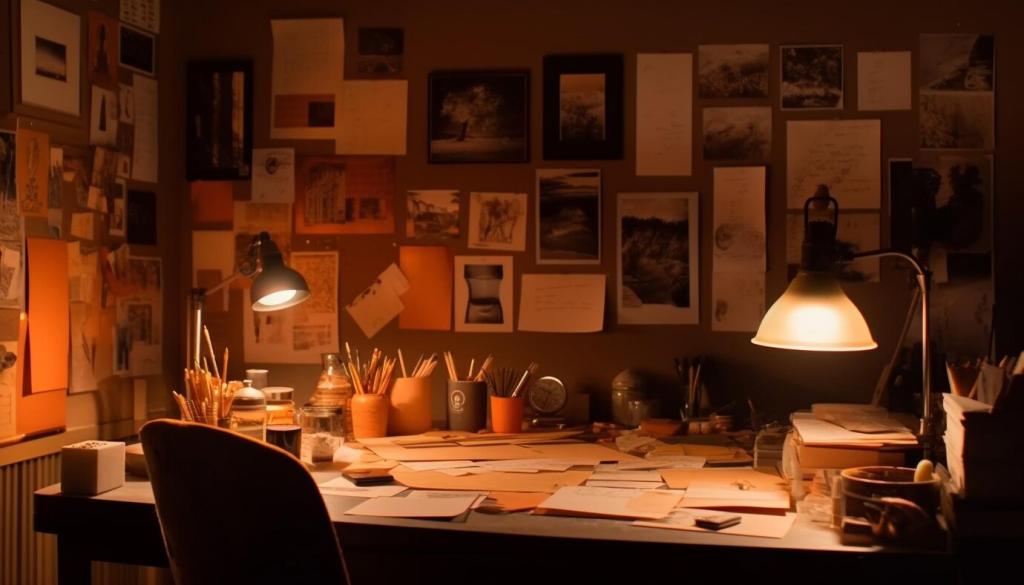Historical Influences on Interior Design
The evolution of interior design is a story richly woven with threads from diverse historical periods and cultures. Through the ages, interiors have reflected the beliefs, aspirations, and technological advancements of their times. By understanding these historical influences, we gain deeper insight into modern design principles and practices. Heritage design elements have persisted across centuries, and many contemporary interiors subtly or overtly carry echoes of the past. Appreciating these origins not only cultivates appreciation for the craft but also inspires creative innovation for future interiors.

Ancient Civilizations: Foundations of Design
Egyptian Grandeur
Ancient Egyptian interiors were a testament to the civilization’s fascination with the afterlife and the divine. Both palaces and tombs displayed an array of decorative elements such as hieroglyphics, symbolic motifs, and richly colored wall paintings. Monumental furniture pieces incorporated symbolic forms, reflecting both religious and cultural importance. Materials like gold, lapis lazuli, and ebony added an aura of mystique and opulence. The symmetry and balance in layout, coupled with hierarchical placement of items, subtly informed the spatial logic that remains influential today.
Greek Elegance
Greek interiors elevated harmony, proportion, and clarity, setting timeless stylistic standards. Homes were designed to bring in natural light and air, and rooms were proportioned according to mathematical principles. Decorative elements like columns, friezes, and pottery were not merely functional but reflected the pursuit of an idealized beauty. Spaces such as androns and courtyards were thoughtfully arranged to accommodate daily activities and social gatherings, contributing to a sense of structured yet warm domesticity that endures in Mediterranean-style interiors.
Roman Innovation
Roman interior design was characterized by grandeur, versatility, and technical innovation. Wealthy citizens adorned their homes with lavish frescoes, intricate mosaics, and sculptural forms. Architectural developments such as the arch, vault, and dome allowed for expansive interiors that could accommodate baths, atriums, and gardens within homes. The Romans mastered the use of space and materials, emphasizing comfort and luxury, while their furniture and decorative fabrics showed keen attention to detail. Their integration of public and private realms through design was a precursor to modern multifunctional spaces.
Middle Ages: Spirituality and Functionality
Ecclesiastical Ambience
Church interiors dominated the medieval landscape, with soaring arches, elaborately carved choir stalls, and vibrant stained glass windows transforming spaces into ethereal realms. The layout of churches and cathedrals reinforced the spiritual journey, guiding worshippers through naves, aisles, and apses. Symbolic motifs and religious iconography were integrated into every element, turning interiors into visual sermons that communicated faith and doctrine. This sacred ambience established principles of spatial hierarchy and storytelling through decoration, features that resonate in later religious and secular spaces alike.
Feudal Fortress
In feudal society, castle interiors prioritized defense as much as comfort. Heavy stone walls, narrow windows, and functional furnishings dominated living quarters. Yet within these fortified shells, tapestries, woven rugs, and massive fireplaces brought warmth and artistic expression. The Great Hall served not just as a communal dining space but also as the political and social heart of the castle, demonstrating the interplay of security and sociability. The adaptive use of resources and the integration of insignias and coats of arms seeded ideas now seen in personalized and utilitarian design.
Monastic Restraint
Monastic interiors reflected vows of poverty, simplicity, and spiritual focus. Architecture was characterized by vaulted ceilings, minimal ornamentation, and well-defined cloisters encouraging quiet contemplation. Sparse furnishings, often handmade, demonstrated the virtue of humility and the value of craftsmanship. Spaces were oriented towards utility and communal living, fostering a sense of order and serenity. This restrained aesthetic influenced later minimalist movements, proving that beauty can emerge from simplicity and discipline.

Classical Symmetry
Renaissance designers drew inspiration from the geometry and order of ancient Rome and Greece. Rooms were arranged in balanced, harmonious sequences, with proportion as the guiding principle. Walls were often divided into panels and adorned with pilasters, cornices, and friezes, echoing the exteriors of classical temples. This insistence on symmetry fostered a sense of tranquility and grandeur, compelling occupants and visitors to appreciate the thoughtful unity of design.

Artistic Flourish
Interiors became canvases for celebrated artists and craftsmen. Frescoes depicting mythological and biblical scenes decorated ceilings and walls, infusing spaces with dynamic color and narrative. Ornamental stucco, gilded moldings, and fine textiles contributed layers of visual interest and tactile pleasure. Furniture pieces evolved with inlay, marquetry, and sculptural elements, combining function and artistic bravado. This flourishing partnership between art and architecture has inspired the decorative arts in every subsequent era.

Humanist Comfort
While grandeur was ever-present, the Renaissance also emphasized livability. Private studies, libraries, and galleries appeared in homes—a reflection of growing literacy and intellectual pursuits. Comfortable, upholstered furniture encouraged relaxation and discourse. Attention to interior gardens and loggias brought nature into living spaces, marking an early awareness of the environmental connection to well-being. These humanist principles contributed to the modern idea of the home as both a retreat and an incubator of knowledge.

Dramatic Grandeur
Baroque interiors were designed to awe and inspire. Grand entrance halls, sweeping staircases, and domed ceilings emphasized spatial drama. Richly layered textures and bold contrasts in color and light created theatrical effects. Architectural features were exaggerated, with mirrors, columns, and gilded ornamentation emphasizing luxury and power. This sense of drama has influenced public and ceremonial spaces through history and still appears in modern interpretations of luxury.
Rococo Intimacy
Emerging from the Baroque, Rococo marked a shift toward lighter, more playful interiors. Rooms embraced asymmetry and gentle curves, with delicate pastel color schemes and whimsical, nature-inspired motifs. Furniture design featured ornate carving, serpentine lines, and upholstered comfort. The emphasis on private salons and boudoirs mirrored societal movements toward more personal, intimate spaces. Rococo’s love of detail and light-heartedness influences modern approaches to cozy, inviting environments.
Artistic Integration
Both styles pursued a unified visual experience, blurring boundaries between architecture, furniture, and decorative arts. Ceiling frescoes flowed seamlessly into wall paneling, while textiles and ceramics echoed architectural motifs. Skilled artisans collaborated to create immersive, cohesive environments. This integration fostered appreciation for the artistry of the total environment, a concept echoed in today’s holistic design philosophies.

Rational Order
Neoclassical interiors emphasized structural clarity and dignified restraint. Floor plans followed clear axes and logical progressions. Columns, pilasters, and geometric motifs were revived in simpler forms, avoiding earlier exuberance. Color palettes turned toward muted tones, highlighting symmetry and order over flamboyance. These environments reflected the period’s admiration for logic, reinforcing a sense of authority and gravitas still seen in institutional architecture today.

Cultivated Sociability
During the Enlightenment, the salon emerged as a key interior space for intellectual exchange. Rooms were furnished with writing desks, bookshelves, and conversational seating arrangements. The arrangement of furniture encouraged dialogue and egalitarian engagement, reflecting ideals of democracy and sociability. Decorative programs often included classical allegories and portraits of philosophers, underscoring the importance of education and enlightened conversation—a tradition manifest in today’s multifunctional, communal spaces.

Decorative Restraint
While still elegant, Neoclassical interiors favored refinement over excess. Ornamentation became measured, with motifs such as laurel wreaths, urns, and Greek key patterns used sparingly. Materials like marble and fine woods were selected as much for their inherent beauty as for their associations with virtue and endurance. The effect was one of poised sophistication, inspiring many later revivals and setting a precedent for tastefulness in interior design.
Victorian interiors were renowned for their rich, eclectic mixes of style. Gothic, Renaissance, and even exotic Orientalist motifs were layered within singular homes. Heavy draperies, patterned wallpapers, and plentiful accessories expressed personal status and global curiosity. The juxtaposition of diverse forms and eras mirrored the complexity of Victorian society itself. While sometimes overwhelming, this approach foregrounded individuality and emotional resonance, echoing in today’s maximalist trends.

Previous
Next
Modernism: The Quest for Function and Form
Rejecting ornamentation and clutter, modernist pioneers such as Le Corbusier and Mies van der Rohe advanced the principle that “less is more.” Interiors emphasized open plans, clean lines, and neutral palettes, focusing on pure form and function. Furniture and architectural elements were stripped to their essentials, allowing light and space to become the main features. This pursuit of simplicity has evolved into contemporary minimalism, underscoring the enduring appeal of the uncluttered, purposeful interior.
Global Influences and Cross-Cultural Exchange
Orientalist Inspirations
Nineteenth-century fascination with the East introduced new motifs, materials, and spatial concepts into Western interiors. Decorative screens, lacquered surfaces, and intricate textiles suggested luxury, sensuality, and the allure of the exotic. While sometimes romanticized, these influences initiated dialogues between cultures and prompted deeper exploration of global decorative arts. Today, respect for authenticity and context guides the incorporation of international elements in design.
Vernacular Traditions
Throughout history, regional styles have drawn on local resources, climate, and customs, shaping distinct interior environments. From Japanese tatami rooms to Moroccan riads, vernacular design expresses the intimate relationship between people and place. Modern designers draw inspiration from these traditions, adapting indigenous techniques and materials to suit contemporary needs while preserving cultural identity and ecological wisdom.
Fusion and Innovation
The late twentieth and early twenty-first centuries have witnessed an unprecedented blending of styles, as migration, travel, and digital media foster global connectivity. Designers create eclectic interiors that unite Scandinavian minimalism with African textiles or industrial chic with tropical motifs. This dynamic process of fusion spurs creativity and self-expression while encouraging sensitivity to cultural heritage and storytelling within spaces.
